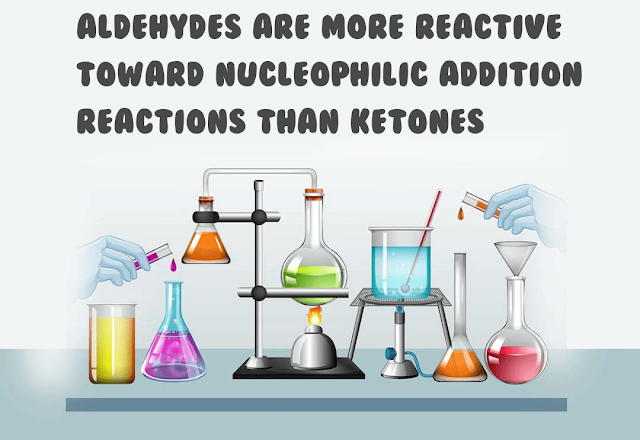Aldehydes are more reactive than ketones because the carbonyl group is already electron-deficient. In general, aldehydes are more reactive than ketones in nucleophilic addition reactions because the carbonyl group is already electron-deficient.
This means that the electrons from the aldehyde can be donated to form a covalent bond with either of the two other molecules.
{tocify} $title={Table of Contents}
Aldehydes are more reactive than ketones because the carbonyl functional group in aldehydes is more reactive than the hydroxyl functional group in ketones.
The carbonyl group of an aldehyde is electron-rich and can form strong covalent bonds with other molecules. It can also act as a nucleophile and react with electrophiles to form additional products. The hydroxyl group of a ketone, on the other hand, is electron-deficient and cannot form strong covalent bonds with other molecules. It cannot act as a nucleophile or react with electrophiles to form additional products.
Reactivity order of aldehydes and ketones
Aldehydes and ketones are both reactive organic compounds. The difference between the two is how they react to other substances. Aldehydes react with water, whereas ketones do not.
Aldehydes are more reactive than ketones because they have a C=O double bond in the molecule that can be easily broken and produce different products. Ketones don't have this double bond because it is replaced by a single bond with oxygen.
Aromatic aldehydes are less reactive than aliphatic aldehydes
Aromatic aldehydes are less reactive than aliphatic aldehydes. They are not as reactive because there is no electrophilic carbon in the molecule.
Aromatic aldehydes have an aromatic ring, which is electron-rich. The electrons in the ring stabilize the molecule and make it less reactive.
Aldehydes and ketones are polar compounds because
Aldehydes and ketones are polar compounds because they have a partial positive charge on one end of the molecule and a partial negative charge on the other end.
Aldehydes and ketones are polar compounds because they have a partial positive charge on one end of the molecule and a partial negative charge on the other end. The carbonyl carbon (C=O) is partially positively charged due to its double bond with oxygen, which has two electrons in its outer shell. The hydrogens attached to this carbon are partially negatively charged due to their single bond with oxygen, which has one electron in its outer shell. This means that an aldehyde or ketone is polar because it has both a partially positive and partially negative side.
Aldehydes and ketones undergo several additional reactions
The aldehydes and ketones undergo several addition reactions, which are classified as either electrophilic or nucleophilic.
The electrophilic addition reactions are additions where the nucleophile is attracted to the electrons in the pi bond, such as in an alkene. The nucleophile attacks the pi bond and takes one of the electrons from it to form a new covalent bond with one of the carbons.
Nucleophilic reactions are additions where the nucleophile is attracted to an atom other than carbon, such as oxygen or nitrogen. The nucleophile attacks this atom and forms a new covalent bond with it.

